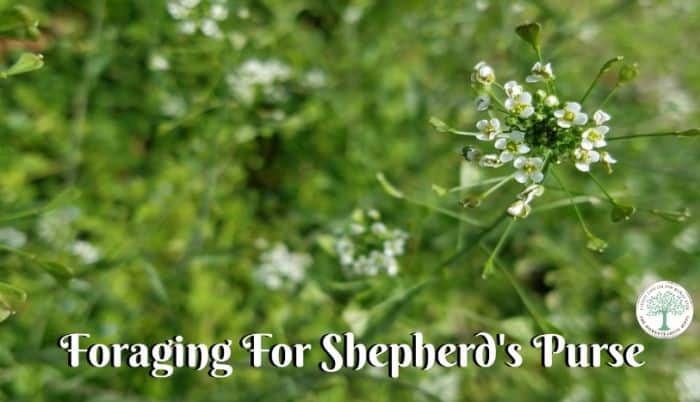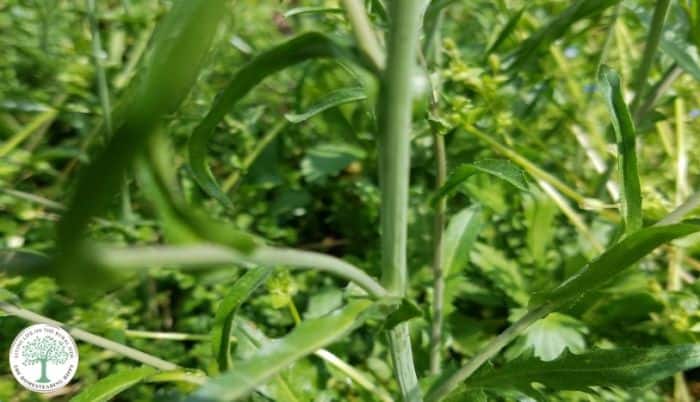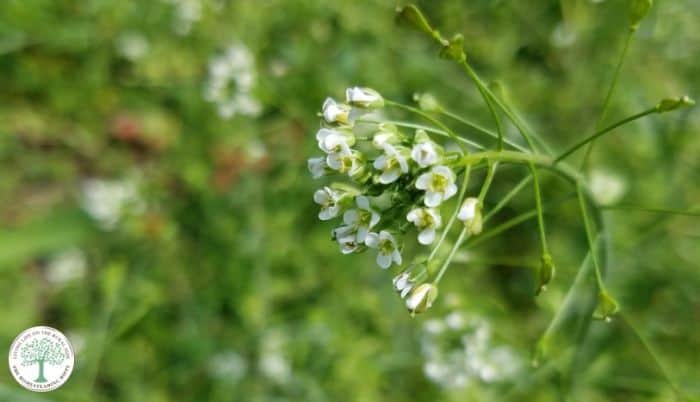Shepherd’s purse, Capsella bursa-pastoris, is a plant that is easy to identify.
The base of the leaves make it look similar to dandelion as it starts to grow. At first, the leaves are rounded, but they become more deeply toothed as the plant matures.
The leaves bear a resemblance to the knapsack carried by shepherds, hence its name.

In the early Spring, the flowers form on shepherd’s purse.
Identification
They are tiny, less than 3-8 mm across. You’ll find this plant all over, especially in waste fields, roadsides, and it is even cultivated in some gardens.

The stems are thin, smooth, and spindly. The seeds are “sticky” and can stick to insects, helping to spread the plant.
Even better, Shepherd’s Purse is thought to be toxic to mosquitoes! Spreading the shepherd’s purse seeds in water may actually help control the mosquito population!

In the garden, Shepherd’s Purse may absorb excess salts from the soil, making it a great, green compost and soil amendment. Some cultivate it in their garden just for that purpose.
Medicinally speaking, some herbalists use shepherd’s purse for heavy menstrual bleeding {source}
This is most often in the form of a tincture or a tea. Topically applied, as an infused oil salve, it can help promote healing of injuries.
Shepherd’s Purse Is Edible
Shepherd’s Purse has Vitamins A, C, B2, and K. It is also a source of niacin, iron, and calcium.
The entire plant is edible. The leaves and flowers can be used in any way you would use other wild greens, and the root can be dried and used in place of ginger.
Harvesting
To harvest Shepherd’s Purse, simply cut the stems about 2 inches from the ground.
Make sure to only take 1/5 -1/10 of the plant from the area to allow regrowth. And, as always, use caution by the roadsides, as they may have been sprayed.
How To Use Shepherd’s Purse
If you are wondering what does shepherd’s purse taste like, it’s peppery, with a tangy bite. Here’s how to use shepherd’s purse as a wild edible:
- in a salad, with other wild greens
- in a stir fry, in place of kale or spinach
- in tabbouleh, in place of parsley
- in a tea, as an infusion
- in a tincture or glycerite
Shepherd’s Purse is currently thought to be safe for all ages. However, it is best to avoid using this plant during pregnancy due to uterine action and breastfeeding.
Have you foraged for Shepherd’s Purse before? What are some ways you have used it? Be sure to pin this for later!

Heather’s homesteading journey started in 2006, with baby steps: first, she got a few raised beds, some chickens, and rabbits. Over the years, she amassed a wealth of homesteading knowledge, knowledge that you can find in the articles of this blog.
Learn more about Heather and the rest of the writers on this page.

Sheperd’s Purse is also mildly astringent and the infusion can be used as a facial water on areas with burst vessels ( maily on cheeks snd nose)
Another great use! Thanks!!